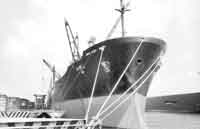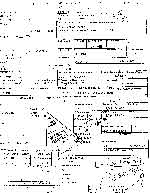Who was behind
the Rs. 892 Million Urea deal?
A proper investigation is still to be launched
into the controversial purchase of urea valued at Rs. 892 million
– a transaction apparently finalised within six hours without
the permission of a Cabinet-Appointed Tender Board (CATB), The Sunday
Times learns.
Allegations have been levelled against some officials in the Agriculture
Development Ministry, The Ceylon Fertilizer Corporation (CFC) and
The Colombo Commercial Fertilizer (CCF) that they decided to purchase
27,500 metric tonnes of urea without following the usual procedures.
 |
| The ship that brought the 27,500 metric tonnes
of urea to the Colombo Port |
The go-ahead to make this multi-million rupee
purchase from a US company known as M/S Transammonia had been reportedly
given by a committee comprising the personal secretary and an advisor
of Agriculture Development Minister Chamal Rajapaksa and two other
officials.
It has been revealed that quotations for the purchase were only
called for from four parties on March 24, this year and of those
only M/S Transammonia and M/S Toepfer had responded as the other
two parties, who were asked to quote by 2.30 pm on the same day,
were from West Asia and were closed for business, as it was a Friday.
Many an eyebrow has been raised about this multi-million rupee transaction
which experts in the fertilizer industry claim is the biggest sum
to have been paid to an importer to buy 27,500 MT of urea.
Questions are also being asked how a committee comprising the personal
secretary and personal advisor of a minister could sanction such
a huge deal and who appointed the committee. The only action so
far taken by the minister has been to ask the two people to resign
their posts after the issue was exposed. But The Sunday Times learns
that no action has been initiated against those who allowed these
people to sit on such a committee to decide on a multi-million rupee
purchase.
CCF and CFC purchased 27,500 MT of urea fertilizer in bulk from
M/s Transammonia at US$ 315 per MT and the quantities were equally
to be split between the CCF and CFC.
 |
| Chamal Rajapaksa |
However the prevailing price of urea in bag form
in the international market at the time of the deal has been between
US$ 290 to 295 and the local suppliers could have provided urea
at the same price, people involved in the trade point out.
One of the local suppliers who spoke on condition of anonymity told
The Sunday Times that the local sector could have provided urea
in bag form at US$ 290 per MT.
On the same day of the CFC/CCF purchase, India bought 40,000 MT
bulk urea on tender at US$ 264.50 MT. This purchase was published
in ‘Fertilizer Week” and “Ferticon”, both
of which are reputed publications dealing with international market
information on fertilizers. The seller was the same M/s Transammonia.
The minimum loss to the government from 27,500 MT of urea fertilizer
deal which was in bulk is estimated at US$ 15 per MT amounting to
a minimum of 400,000 US dollars or Rs 40 million. .
But the actual loss to the government from the deal is apparently
much more than the aforesaid amount. It is stated that the price
for bagging in Colombo is about US$ 12 per MT and the bags cost
another US$ 7 per MT making the bagged price an equivalent of US$
334 per MT. The CFC/CCF purchase at US$ 15 per MT was on Letter
of Credit (LC) terms. On LC 180 days LC terms, the CCF/CFC purchase
works out to about US$ 343 per MT as 180 days costs another US$
9 per MT.
 |
| The Customs Declaration form filled by the
CFC |
Just three days before the deal with the M/s Transammonia
was sealed CCF had awarded a contract to Conagra International,
a fertilizer supplier to supply 12000 MT of urea in bag form at
US$ 298.48 per MT.
The Agriculture Development Ministry cited shortage of urea fertilizer
and refusal by private sector companies to provide it to them, as
the reasons for the sudden purchase on March 24. It also claimed
that the private sector had been asked to provide their buffer stocks,
brought into the country on a subsidy scheme, amounting to about
30,000 MT to state-owned fertilizer companies but that only 3,000
MT had been provided.
However, The Sunday Times learns that such a request from the private
sector was only made (by National Fertilizer Secretariat Director
on behalf of the Agriculture Development Ministry) three days after
the purchase with M/s Transammonia had been concluded. It was only
at that juncture that the private sector had supplied a stock of
3,000 MT of urea, The Sunday Times was told.
Though they had a meeting with the local importers on February 22
the meeting was only to discuss a set of proposals which they were
to submit to the Treasury about their dealings in the local market.
They claim that no requests had been made for any stocks at that
meeting although they had enough supplies and could have given it
at a much lower rate than what had been quoted by M/s Transammonia
. (See montage).
The private sector says there was no reason to bring in a multinational
company without calling for quotations from them when the government
owes over Rs.300 million to the private sector as subsidy on urea
distributed by them during the recent past.
They questioned if there was such an urgency to buy urea why did
the government buy it in bulk instead of buying in bag form as it
would take time to bag the bulk product. They also asked whether
the Ministry and the National Fertilizer Secretariat knew the cost
of bagging the urea prior to the shortage so that a comparison could
have been made with that of the bagged material?
The Sunday Times also learns that the supplier had made a swift
delivery of theurea in Colombo raising doubts among other private
sector dealers whether the particular company had prior information
that the deal was already in their hands.
The transaction was closed on March 24 and the cargo arrived in
Colombo on April 21. The private sector raises the point that loading
would have at least taken five days and the voyage another 20 days
from the port.
Urea is a subsidised item and it is distributed among paddy farmers
at a price of Rs. 350 per bag of 50 kilograms in keeping with the
Mahinda Chinthana. The Government currently subsidises about Rs.
24,000 per MT and on top of this now it has been forced to bear
an additional amount of at least US$ 35 per MT multiplied by 27500
MT. The final loss incurred may exceed Rs. 100 million, but there
was no indication about any investigation.
Minister Rajapaksa as well as the Ministry Secretary T.Warnasuriya
were both out of the country and were not available for comment.
|


